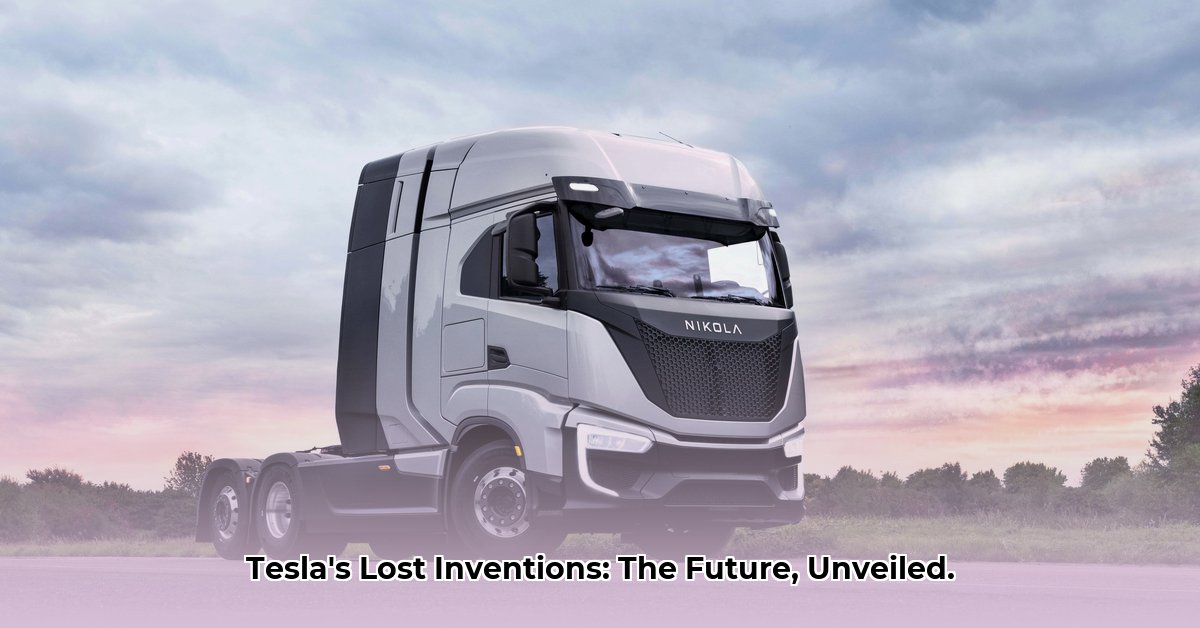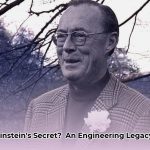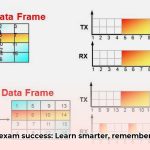Nikola Tesla, a name synonymous with groundbreaking innovation, conceived inventions so ambitious they remained unrealized in his era. Imagine a world shaped by his complete vision. What prevented these revolutionary ideas from becoming reality? Often, the technological landscape of his time simply couldn’t support them. Materials lacked the required strength, computers lacked the necessary power, and societal readiness lagged behind Tesla’s forward-thinking concepts. This article delves into Tesla’s most captivating unbuilt inventions, showcasing his unparalleled foresight and how echoes of his ideas resonate in today’s technological advancements. Prepare to be inspired by a mind that transcended its time!
Nikola Tesla’s Unrealized Masterpieces: Blueprints for a Future Yet to Come
Nikola Tesla’s genius sparked a revolution in electrical engineering and beyond. Yet, many of his most ambitious projects never moved past the blueprint stage. These unrealized inventions offer a glimpse into a future that, while beyond the reach of his contemporaries, now seems increasingly within our grasp. Let’s explore some of these visionary concepts, examining the obstacles that prevented their realization and the surprising ways they foreshadowed modern technology.
1. Wireless Power Transmission: The Wardenclyffe Tower and the Dream of a Cordless World
Envision a world liberated from tangled power cords and unsightly power lines – a world powered wirelessly. This was the promise of Tesla’s Wardenclyffe Tower, a colossal structure designed to transmit electricity across vast distances without wires. Imagine a giant, futuristic radio transmitter, broadcasting not music, but energy itself. Think of charging your electric vehicle simply by parking in your garage, or powering your entire home without being connected to the grid – that was the scale of Tesla’s ambition.
Unfortunately, the Wardenclyffe Tower project never achieved its intended purpose. The primary obstacle was the immaturity of the technology needed to make the project viable. The materials needed to handle and transmit extremely high-voltage electricity without significant loss, and the technology to efficiently capture and use that electricity were still in their infancy. Additionally, the project faced financial challenges after initial funding dried up. Despite its incomplete status, Wardenclyffe Tower laid the groundwork for today’s wireless charging technology and ongoing research into long-range wireless power transmission. Tesla’s vision, though ahead of its time, is gradually becoming a tangible reality.
2. The “Death Ray”: Unraveling the Mystery of Tesla’s Directed-Energy Weapon
The term “death ray” conjures images of a destructive weapon capable of obliterating targets from afar. Tesla did explore the concept of directed-energy weapons (DEWs), but his vision was more nuanced than the popular imagination suggests. Tesla envisioned his “Teleforce” weapon, not as an offensive tool, but as a defensive system that would render war obsolete. His device would project a high-energy beam capable of disabling aircraft or ground forces at a great distance.
While the exact details of Tesla’s design remain shrouded in secrecy, the underlying concept has evolved into modern directed-energy weapons, such as high-energy lasers and microwave devices, which are being developed for military applications today. The limitations of Tesla’s era, including insufficient power generation and beam-focusing capabilities, prevented him from building a functional prototype.
3. The Teleautomaton: A Pioneer of Remote Control Technology
Decades before the advent of drones and self-driving cars, Tesla astounded audiences at the 1898 Electrical Exposition in Madison Square Garden by demonstrating a remotely controlled boat. This wasn’t a mere toy; it was a groundbreaking demonstration of radio control, making Tesla the father of remote control technology. The crowd watched in amazement as Tesla maneuvered the vessel through a series of pre-set commands, all controlled wirelessly via radio waves.
Tesla’s teleautomaton demonstration paved the way for countless remote-controlled devices, from model airplanes to sophisticated industrial robots. It foreshadowed the pervasive role of remote control in modern life. Tesla’s invention was a transformational demonstration of the potential of wireless communication to control machinery, forever altering our relationship with technology.
4. Tesla’s Flying Machine: Vertical Flight and Unconventional Propulsion
Beyond conventional aircraft designs, Tesla envisioned a flying machine that defied traditional aviation principles. He imagined a craft devoid of wings or propellers, potentially powered by electricity, and capable of vertical takeoff and landing (VTOL). Lacking detailed plans, reconstructing Tesla’s precise approach is challenging, but the concept anticipates modern VTOL technology.
Existing documents suggested Tesla’s design was based on electrogravitics, an unproven theory of using electricity to counteract gravity. While the exact mechanisms remain a matter of speculation, the concept of electric vertical flight represents a significant leap in aeronautical engineering.
5. “Photographing Thoughts”: Envisioning Brain-Computer Interfaces
One of Tesla’s most enigmatic ideas was the concept of “photographing thoughts,” an attempt to visualize the contents of the human mind. While seemingly straight out of science fiction, this notion bears a striking resemblance to modern brain-computer interfaces (BCIs). Today, researchers are developing technologies that can decode brain signals and translate them into actions or images.
Though Tesla’s vision remains largely undocumented, it foreshadows the potential for capturing and interpreting brain activity in modern neuroscience. While the technology to literally “photograph” a thought remain elusive, the advances in BCI suggest that Tesla’s conceptual idea may have been more prescient than previously imagined.
Overcoming Technological Barriers: From Tesla’s Era to Modern Innovations
The following table highlights the technological constraints Tesla encountered and how modern advancements have addressed those challenges:
| Invention | Technological Limitations (Tesla’s Era) | Modern Parallels |
|---|---|---|
| Wireless Power Transmission | Lack of suitable materials for efficient high-voltage transmission; insufficient understanding of electromagnetic wave behavior over long distances; limited ability to efficiently capture and convert transmitted energy. | Wireless charging pads for electronic devices; research into long-range wireless power beaming using microwaves or lasers; development of high-efficiency rectennas (rectifying antennas) for energy capture; advanced metamaterials for controlling electromagnetic wave propagation; superconducting materials to minimize power loss during transmission; wireless power transfer for electric vehicles. |
| “Death Ray” | Inability to generate and focus high-energy beams due to limitations in power generation, vacuum technology, and beam control; insufficient understanding of particle physics and beam propagation in the atmosphere; limited availability of high-strength materials to withstand the extreme heat and stress generated by the beam weapon; rudimentary targeting and tracking systems; difficulties in scaling up the technology to create a weapon with a practical range and destructive power. | High-energy lasers for missile defense and anti-aircraft systems; microwave weapons for crowd control and disabling electronic devices; particle beam research for potential future military applications; advanced beam-steering and tracking technologies; development of high-power, compact energy sources; use of adaptive optics to compensate for atmospheric distortion. |
| Teleautomaton | Primitive radio technology with limited range and control capabilities; bulky and unreliable electronic components; lack of miniaturization; limited computing power for autonomous control; challenges in developing robust and reliable remote control systems; difficulties in creating small, lightweight power sources for the remotely controlled devices. | Drones for surveillance, delivery, and military applications; self-driving cars and autonomous vehicles; remote-controlled robots for hazardous environments; advanced wireless communication protocols with high bandwidth and security; miniaturized electronic components and sensors; powerful embedded processors for real-time control; development of long-lasting, high-energy-density batteries. |
| Flying Machine | Lack of lightweight, high-strength materials for airframe construction; insufficient power-to-weight ratio of available engines; limited understanding of aerodynamics and flight control systems for unconventional aircraft; difficulties in generating lift without wings or propellers; challenges in developing stable and efficient electric propulsion systems; rudimentary navigation and guidance systems. | Electric vertical takeoff and landing (eVTOL) aircraft for urban air mobility; advanced composite materials for lightweight airframes; high-power, compact electric motors; sophisticated flight control systems with fly-by-wire technology; research into unconventional propulsion methods, such as electrohydrodynamic thrust; advanced navigation and sensor systems for autonomous flight; drone technology for various applications. |
| “Photographing Thoughts” | Rudimentary understanding of brain function and neural activity; limited brain imaging technology; lack of computational power to process complex brain signals; challenges in developing algorithms to decode thoughts and emotions from brain activity; ethical concerns about privacy and mind control; difficulties in creating non-invasive methods for capturing brain activity; limited knowledge of the relationship between brain activity and subjective experience. | Brain-computer interfaces (BCIs) for controlling prosthetic devices and restoring motor function; neuroimaging techniques, such as fMRI and EEG, for studying brain activity; development of algorithms to decode brain signals and predict behavior; research into artificial intelligence and machine learning to analyze brain data; ethical guidelines for BCI research and development; non-invasive brain-computer interfaces using EEG or near-infrared spectroscopy; brain-computer interfaces for communication and cognitive enhancement. |
Tesla’s unrealized inventions stand as a testament to the power of imagination and the importance of pushing the boundaries of technology. He didn’t just invent; he envisioned a future that continues to inspire scientists and engineers today. His life’s work reminds us that even the seemingly impossible can become a reality with enough time, creativity, and dedication. The future he imagined is still unfolding. Could Tesla’s unrealized inventions lead to further groundbreaking advancements in the 21st century?
The Technological Roadblocks: Why Tesla’s Visions Remained Dreams in His Lifetime
Key Takeaways:
- Tesla’s ambitious ideas were often constrained by the limited technological capabilities of his time.
- The absence of advanced materials hindered the practical realization of many of his designs.
- The limitations of computing power restricted the development of sophisticated control systems.
- Inadequate understanding of fundamental scientific principles also played a role.
Wireless Power: A Global Grid Without Wires
Tesla’s dream of a wirelessly powered world centered on the Wardenclyffe Tower, intended to transmit electricity across vast distances. The Technological Roadblocks: Why Tesla’s Visions Remained Dreams in His Lifetime primarily involved the lack of materials capable of efficiently transmitting power over long ranges. The understanding of electromagnetic energy propagation was also incomplete. Today, we possess wireless charging for smaller devices, but true global wireless power remains elusive, echoing Tesla’s challenges. Was Tesla’s dream too ambitious for the technology of his era?
Teleforce “Death Ray”: A Defensive Shield
Tesla’s “death ray,” or Teleforce, aimed to project concentrated energy beams for defense. The Technological Roadblocks: Why Tesla’s Visions Remained Dreams in His Lifetime stemmed from the inability to generate and focus a sufficiently powerful beam with the available technology. The vacuum technology, high-voltage generation, and precise beam control systems were simply beyond reach. Modern directed-energy weapons under development still represent significant technological hurdles, mirroring Tesla’s difficulties.
Supersonic Airships: Crossing Continents in Hours
Tesla envisioned airships traveling at supersonic speeds at high altitudes. The Technological Roadblocks: Why Tesla’s Visions Remained Dreams in His Lifetime included the absence of lightweight, high-strength materials needed for such craft. The power sources and propulsion systems required for supersonic flight far exceeded the capabilities of his time.
Earthquake Machine: Harnessing Resonance
Tesla’s oscillator, designed to generate resonant vibrations, became associated with claims of inducing seismic activity. The Technological Roadblocks: Why Tesla’s Visions Remained Dreams in His Lifetime centered on the lack of precise control and scaled-up power needed to manipulate seismic waves. Modern seismology utilizes similar principles for monitoring, but not for controlled manipulation.
Artificial Tidal Waves: Manipulating the Oceans
The concept of generating artificial tidal waves represented another ambitious idea. The Technological Roadblocks: Why Tesla’s Visions Remained Dreams in His Lifetime involved the immense energy requirements and the necessary understanding to control such forces. Our modern understanding of ocean dynamics reinforces the impracticality of the concept with the technology of this time.
Tesla’s Flying Machines: Unveiling the Engineering Challenges
Key Takeaways:
- Tesla’s vision transcended a single flying machine, encompassing both a patented helicopter-plane and more theoretical designs.
- His helicopter-plane faced challenges related to the materials science and engine technology.
- The practicality of Tesla’s advanced ideas, possibly based on electrogravitic principles, remains questionable but sparks current innovation.
The Helicopter-Plane: A Hybrid Vision
Tesla patented a helicopter-plane capable of vertical takeoff and landing. Tesla’s Flying Machines: Unveiling the Engineering Challenges were significant. The proposed propeller design might have been insufficient for the aircraft’s intended weight and size, a direct consequence of the limited strength of materials available at the time.
Speculative Concepts: Beyond Conventional Flight
Other flying machine concepts attributed to Tesla, often described as wingless aircraft, remain largely undocumented. Some believe Tesla explored electrogravitic propulsion, attempting to manipulate gravity through electromagnetic fields. Much of Tesla’s research was lost or destroyed, obscuring details of these projects.
Electrogravitic Propulsion: A Theoretical Frontier
Even if Tesla experimented with electrogravitics, substantial engineering hurdles existed. Generating the necessary energy to manipulate gravitational forces was beyond the technology of his era and still is today. The concept remains theoretical.
Tesla’s Enduring Impact on Aviation
Despite the unbuilt status of many projects, Tesla’s vision continues to influence modern aviation. His emphasis on safety, wireless power transmission, and unconventional propulsion inspires engineers. Modern VTOL aircraft designs continue to address the challenges Tesla identified.
Tesla’s Earthquake Machine: Separating Fact from Fiction
Key Takeaways:
- Tesla’s mechanical oscillator generated powerful vibrations.
- Claims about causing an earthquake are unsubstantiated.
- The oscillator’s importance lies in its use of resonance.
The Oscillator: Mechanical Ingenuity
Nikola Tesla’s mechanical oscillator has become linked to stories of a man-made earthquake. Tesla’s device was meant to create high-frequency vibrations. He intended to harness resonance for power generation, demonstrating the potential for modern applications.
His intention wasn’t to shake the Earth, but to harness the power of resonance for power generation and wireless transmission, cutting-edge applications for the era.
The Earthquake Myth: Deciphering Legend
The popular claim says that Tesla’s oscillator caused a minor earthquake in New York. While his writings talk about vibrations shaking buildings, no evidence confirms a seismic event. The “earthquake machine” story is more myth than fact.
Resonance: The Core of the Machine
Tesla’s oscillator used resonance by timing vibrations to energy production. Controlling these vibrations was the goal. The challenge was controlling and focusing the energy produced by this resonant amplification. This principle, central to Tesla’s design, finds applications across diverse engineering domains today – from structural analysis to material science.
Modern Uses: Adapting the Principles
While unable to produce large effects, the oscillator’s principles endure. Modern technology uses similar resonance for vibration damping and material testing. Tesla’s design reflects the limits of the 19th century. The energy required for seismic effects far surpasses Tesla’s oscillator capacity.
Tesla’s Vision: Innovation and Beyond
The mechanical oscillator shows Tesla’s inventive mind and his focus on resonance. His vision, though partly myth, highlights his genius. The oscillator shows how unrealized inventions inspire future advances.
















